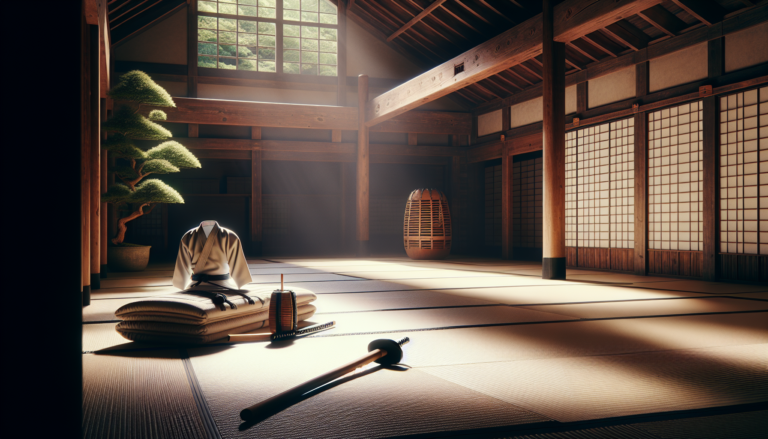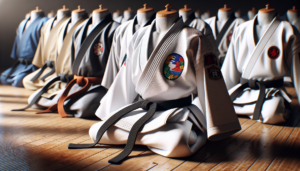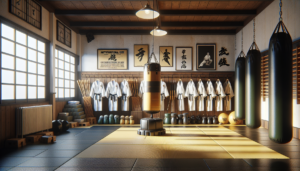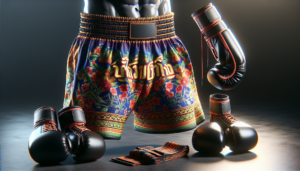Introduction to Aikido
Aikido is a unique Japanese martial art that has captured the interest of many around the world. It offers a peaceful approach to self-defense, focusing on redirecting an attacker’s energy rather than meeting force with force. Aikido training not only provides physical benefits but also promotes mental and spiritual growth.
What is Aikido?
Aikido is a Japanese martial art that utilizes joint locks, throws, strikes, and pins. Its techniques focus on redirecting aggression through circular movement and advantageous positioning. Unlike many other martial arts, Aikido is non-competitive, measuring progress by personal development rather than winning contests against others.
Aikido is inclusive, welcoming individuals of all levels, sizes, strengths, genders, backgrounds, and abilities. Training emphasizes endurance, flexibility, stability, situational awareness, and responsiveness. Students work together cooperatively to improve their skills and understanding of the art.
History of Aikido
Aikido was developed by Morihei Ueshiba, known as O Sensei (Great Teacher), in the early 20th century. Ueshiba was a renowned martial artist who studied various styles including Daito Ryu jujitsu. He combined his martial training with his spiritual practices to create the unique art of Aikido.
Ueshiba taught that true victory is victory over oneself. He aimed to create an art that could neutralize aggression without causing injury. This philosophy shaped Aikido into a practice focused on personal growth and peaceful conflict resolution, rather than just fighting techniques.
Core Principles and Philosophy of Aikido
The Art of Peace
The philosophy of Aikido centers around the concept of the “Art of Peace.” This involves learning to control aggression without inflicting harm. Hurting an opponent is seen as hurting oneself. Instead, the aim is to neutralize attacks and redirect that negative energy into something more positive.
Aikido teaches that the path to reconciliation is superior to defeating an enemy. Its movements are designed to control without damage, to subdue without violence. By practicing the Art of Peace, Aikido students cultivate compassion and learn to defuse conflict.
Harmony and Balance
The word Aikido can be translated as “the way of harmony” or “the way of peace.” It refers to the idea of being in tune with the rhythms of nature and the universe. When mind, body, and spirit work as one, a person can respond effectively to any situation.
Aikido movements are smooth, fluid, and circular. They blend with and redirect the energy of an attacker, maintaining the defender’s balance and composure. This requires being fully present and aware. Regular practice unifies the self and creates a state of wholeness or completion.
Aikido Techniques and Training
Fundamental Techniques
Aikido techniques include joint locks, throws, and pins that neutralize an attacker while keeping the practitioner grounded and in control. Rather than punching or kicking, Aikido uses the attacker’s own force and momentum against them with deft body positioning and circular motions.
Some key Aikido techniques include:
- Ikkyo: A shoulder control that disrupts balance
- Nikyo: A wrist lock that brings an attacker to their knees
- Sankyo: A wrist twist that rotates the arm and controls the elbow
- Irimi Nage: Entering throw that redirects the attack’s force
- Shiho Nage: Four corner throw that unbalances in any direction
Training Methods
Aikido training takes place in classes, seminars, retreats and regular individual practice. Classes are the primary venue for learning techniques. Students take turns as the attacker (uke) and the defender (nage). This develops both the ability to execute techniques and to receive them safely.
Aikido seminars bring together practitioners from different schools and styles to train under senior instructors. Seminars offer a chance to experience new ways of practice and meet others in the Aikido community. Some seminars focus on weapons training with the wooden sword (bokken), wooden staff (jo), and knife (tanto).
Physical and Mental Benefits
Aikido training improves physical fitness, flexibility, balance and coordination. The cooperative training fosters respect, compassion, and effective communication skills. Practitioners gain increased situational awareness and the ability to remain calm under pressure.
Regular Aikido practice strengthens the mind-body connection and promotes a sense of inner peace and confidence. The meditative aspects of the art enhance focus, stress management, and overall well-being. Many find that Aikido principles of conflict resolution translate into their daily lives and relationships.
Aikido Community and Practice
Aikido Practitioners
Those who practice Aikido come from all walks of life – all ages, genders, cultures, and professions. Some train for self-defense, others for personal growth, and many for both. Aikido is accessible to people of any physical ability, and training is adapted to suit the individual’s needs.
Students advance through a series of ranks, each marked by a kyuwariesu (colored belt) and then yudansha (black belt) levels. However, Aikido is non-competitive and the true measure of progress lies in self-improvement, not outranking others. Mutual respect and support are hallmarks of Aikido culture.
Aikido Seminars and Events
In addition to regular classes, there are frequent opportunities to train with visiting instructors or attend special events. Aikido seminars, camps, and conventions take place around the world. These gatherings allow practitioners to expand their horizons and connect with the wider Aikido community.
Demonstrations are another common event. Practitioners showcase Aikido techniques for the public to spread awareness about the art. Demos often include advanced students and instructors performing both bare-handed and weapons routines. Many find watching a skilled Aikido demonstration to be a beautiful and inspiring experience.
Conclusion
In summary, Aikido is a rich and multi-faceted Japanese martial art that offers benefits far beyond physical self-defense techniques. Its principles of non-violence, self-improvement, and harmony make it a uniquely constructive and peaceful practice.
Aikido welcomes practitioners of all backgrounds to train their bodies, sharpen their minds, and elevate their spirits. It fosters a supportive community united by common values of respect and compassion. With regular training, Aikido becomes a transformative vehicle for lifelong learning and personal development.
To learn more about Aikido, consider visiting a local dojo or attending an introductory seminar. Reading books by Aikido masters like Morihei Ueshiba and Koichi Tohei is another great way to gain insight into this profound art. Whether pursuing self-defense, physical fitness, or spiritual growth, Aikido offers a rewarding path accessible to all.






